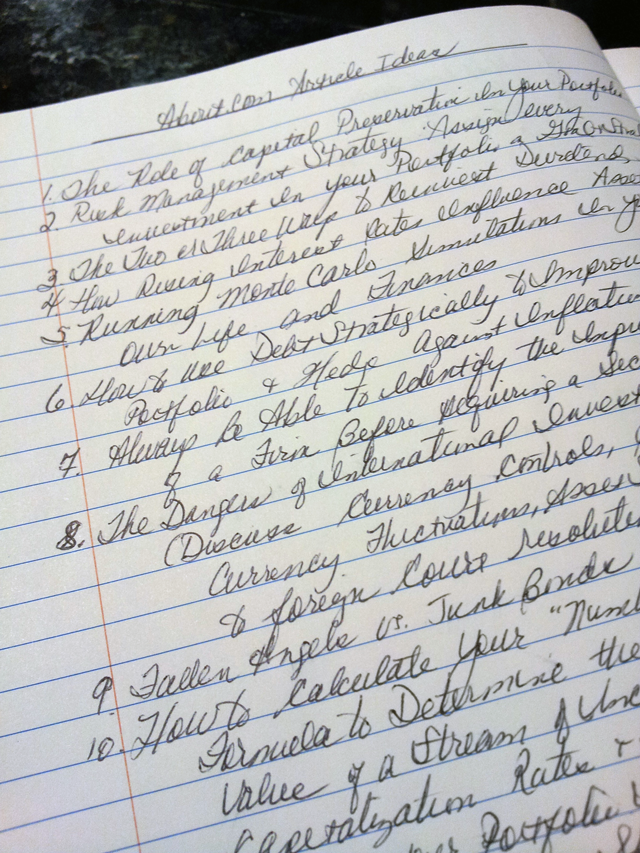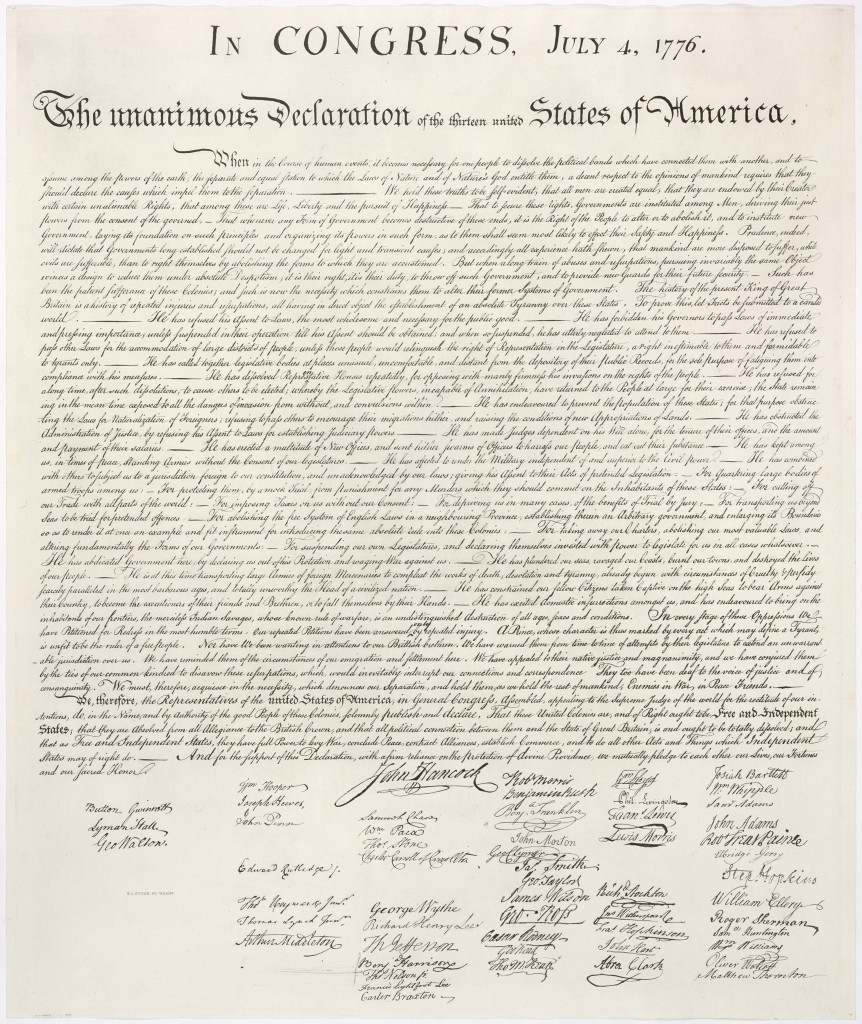I’ve seen a lot of rumblings on the Internet over the past few months about writing in cursive. From people complaining on Reddit that it is the most useless skill they have to the media uproar in the George Zimmerman trial when it was discovered that star witness couldn’t read cursive and had to have the letter read for her in court, for one reason or another, it seems to be everywhere.
There is a good body of academic studies that link the mental processes involved during writing long-hand and the ability to retain key information, learn new ideas more quickly, stave off age-related mental decline, and force growth more quickly in the brain’s processing centers according to one study done at Indiana University examining the MRI activity of children who had been trained writing longhand versus those who had not. It has to do with the way the brain maps the spacial relationships between the symbols you are making with your hand and the actual content. It’s tied to our biology; the evolution of the human mind. These connections and development happen in a way when you put pen to paper that does not occur when you are typing. If you are studying something important, or you want to think clearly about a topic, writing it out longhand forces changes in the way your neural networks analyze the information.
Based on the sheer volume of research done in this area, there is no question that the act of writing is valuable in a way for our cognitive development in a way that clicking little plastic buttons or seeing text on a screen cannot replicate. Typing is efficient in some cases, but it is a poor substitute as it does none of these things for your brain or processing. (Taking it too far, being tied to a screen all day can actually cause a form of dementia that causes a young person to have a brain that resembles that of person with a brain injury.) And I am not an impartial bystander who is opposed to typing. I made my initial money founding and running an Internet company. I’ve been able to type since 4th grade when I convinced the teacher to let me skip recess and use the computer lab to learn. The last time I tested myself, my typing speed was exactly where it has been since I was in high school, between 120 to 136 words per minute with 99%+ accuracy (the speed, I imagine, has something to do with my dad making me taking piano lessons throughout my childhood as the skill sets seem comparable – it’s all just hitting keys in a coordinated manner). I am not advocating the disavowal of typing. It has its place.
These studies were the reason that, years ago, I decided to make longhand part of my process. When I have something important to think about where the stakes are truly high, I do not sit in front of a computer. I go outside, pull out a notebook, and start writing. It’s one of the reasons my thought processes are so disciplined – you aren’t as prone to making sloppy mistakes when you have to take the time to think a matter through before drawing ink across the page. Half the time, even if I am making a quick list, I still use paper. Last night, I wrote out a list of potential ideas for the About.com site, to keep as part of an on-going file, so I can grab it and use it as an inspiration starting point when I need to get another article published. Most of my “big idea” or “think about this” work is done by hand. It sticks in my mind, more.

I write in cursive even when I scribble out a quick list without any concern for the handwriting quality or formatting. Like all things in life, when you learn to do it correctly, it’s faster and more efficient. I owe an enormous debt to my elementary school teachers who made it a priority.
With that established – that writing longhand is superior in many respects – the question then turns to whether cursive is superior to print.
Yes. It is.
That’s not a qualitative consideration, it’s a quantitative fact. There are a reason some things evolve. Writing in cursive is a skill that, if learned properly, can result in radically faster transposition from what is in your mind to what is on the paper or screen, just as studying key location on a keyboard is faster than the hunt-and-peck method. (The fastest form of handwriting is actually a combination of print and cursive that elementary school students naturally adapt on their own.) It requires less stopping and starting, is more fluid, and helps avoid muscle cramps. It did not suddenly come out of nowhere – it was developed in the same way humans discovered agriculture, music, animal husbandry, or fractional reserve banking.
In almost all cases, when someone complains about cursive, they do so because they struggled with it in school as a child and there is a mere association effect that is clouding their thinking. Yet, whether they realize it or not, it is a useful skill. If you still have problems with writing in cursive because your muscle coordination is lacking, use the alternative hold, which alleviates a lot of the problems for someone who can’t use the standard grip. Otherwise, switch to a different typestyle. Not everyone has to write in that 1970’s abomination known as D’Nealian. Personally, I use a mix of Spencerian cursive (the font used in Coca-Cola and Ford’s logos) and Macedonian cursive as I was a weird kid who adapted each of my letters based on which one I liked best (and sometimes can’t make up my mind – hence the multiple variations on capital letters based on my mood). Some folks don’t write well in one particular typestyle, which is likely the problem if you are having a bad go at it.
With cursive now being an optional inclusion in the common core curriculum, and private schools seeming to insist on its inclusion in the lesson plan at greater rates (something for which I haven’t found hard numbers but seems to be the case based on a quick, anecdotal survey), I fear this is one more area in which the advantages to my socioeconomic class are going to become evident in second and third order ways that no one anticipated a generation from now. That is true even if the neural studies and MRI scans turn out to be wrong (I doubt it) and it only serves as a subconscious form of signaling theory that will introduce more employment and social barriers. Even now, if I were in a room and someone said, “I can’t read cursive”, my first thought – that subconscious, momentary flash where the brain’s sub-networks are firing before your higher mind kicks into gear – would not be kind. It’s going to come with all sorts of baggage and expectations about the quality of their education. I’m going to presume, rightly or wrongly, that they probably aren’t the brightest crayon in the box because, more often than not, that was the experience someone in my position had growing up throughout childhood. Again, it’s mere association. That’s one powerful mental model.

The most important historical documents in most languages are written in cursive. If you are a native English speaker, and can’t read this, there is a serious issue in the quality of your primary education. Even if no one else knows about it, fix it. Do it for yourself. It’s not a waste of time. This should be no harder to read than print.
If you haven’t written anything out by hand in a day or two, I would highly encourage you to change your work process to include longhand cursive. Years ago, I looked at the evidence and concluded it was superior for memory retention and cognitive processes so I adopted it. I could never go back. I can’t think of a single day since I was a teenager in which I haven’t done a considerable amount of thinking and writing. God only knows what is in the bookshelves full of journals I own – startup ideas, investment valuations, floor plans, theories on the dynamics of power, dividend calculations. I’ll order them all burnt upon my death.
(As an interesting side-note: Even the color of ink you use has an influence on your behavior – teachers that opt for a red ink pen tend to grade much more harshly than they would have if they had read the exact same essays and marked them using another color. I suspect this relationship would hold in non-written evaluations, though I have no proof of that. The topic of color psychology is a fun thing to research.)


